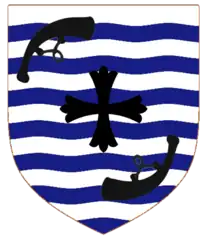The Lord Rippon of Hexham | |
|---|---|
.jpg.webp) Rippon in 1970 | |
| Leader of the Conservatives in the European Parliament | |
| In office 17 April 1977 – 7 July 1979 | |
| Preceded by | Sir Peter Kirk |
| Succeeded by | James Scott-Hopkins |
| Shadow Foreign Secretary | |
| In office 4 March 1974 – 11 February 1975 | |
| Leader | Ted Heath |
| Preceded by | Jim Callaghan |
| Succeeded by | Reginald Maudling |
| Secretary of State for the Environment | |
| In office 5 November 1972 – 4 March 1974 | |
| Prime Minister | Ted Heath |
| Preceded by | Peter Walker |
| Succeeded by | Tony Crosland |
| Chancellor of the Duchy of Lancaster | |
| In office 25 July 1970 – 5 November 1972 | |
| Prime Minister | Ted Heath |
| Preceded by | Anthony Barber |
| Succeeded by | John Davies |
| Minister of Technology | |
| In office 20 June 1970 – 25 July 1970 | |
| Prime Minister | Ted Heath |
| Preceded by | Tony Benn |
| Succeeded by | John Davies |
| Shadow Secretary of State for Defence | |
| In office 1969 – 20 June 1970 | |
| Leader | Ted Heath |
| Preceded by | Reginald Maudling |
| Succeeded by | George Thomson |
| Member of Parliament for Hexham | |
| In office 31 March 1966 – 18 May 1987 | |
| Preceded by | Rupert Speir |
| Succeeded by | Alan Amos |
| Member of Parliament for Norwich South | |
| In office 26 May 1955 – 25 September 1964 | |
| Preceded by | Henry Strauss |
| Succeeded by | Christopher Norwood |
| Personal details | |
| Born | 28 May 1924 Penn, Buckinghamshire, England |
| Died | 28 January 1997 (aged 72) Broomfield, Somerset, England |
| Political party | Conservative |
| Alma mater | Brasenose College, Oxford |
Aubrey Geoffrey Frederick Rippon, Baron Rippon of Hexham, PC, QC (28 May 1924 – 28 January 1997) was a British Conservative Party politician. He is most known for drafting the European Communities Act 1972 which took the United Kingdom into the European Communities on 1 January 1973. He was Chairman of the European-Atlantic Group.
Early life
Born in Penn, Buckinghamshire, the son of the Somerset cricketer Sydney Rippon, Geoffrey Rippon was educated at King's College, Taunton, and Brasenose College, Oxford, where he was president of the University Conservative Association. He was called to the Bar in 1948 and was Mayor of Surbiton 1951–52 and a member of the London County Council from 1952, representing Chelsea. From 1958, he was the leader of the Conservative Party group on the council.[1]
Parliamentary career
After unsuccessfully contesting the seat of Shoreditch and Finsbury in both 1950 and 1951, he became MP for Norwich South in 1955.
As Minister for Public Building and Works in 1962, Rippon controversially sought to demolish and redevelop the Italianate Foreign and Commonwealth Office main building designed in the 1860s by Sir George Gilbert Scott.[2][3] After a campaign led by The Victorian Society and a public outcry the decision was overturned and the building was subsequently granted Grade I listed building status.
In 1964 Rippon was defeated, but moved to the constituency of Hexham in Northumberland at the 1966 general election and remained MP there until retiring in 1987. Among his posts in the Shadow Cabinet was that of Shadow Defence Secretary from 1969 to 1970.
In 1970 he became Chancellor of the Duchy of Lancaster under Edward Heath, and being in favour of the Common Market was given the responsibility of negotiating Britain's entry into it. In 1972 he moved to become Secretary of State for the Environment. During his tenure the Department of the Environment was housed on Marsham Street in unattractive tower blocks nicknamed 'the three ugly sisters'. Rippon is supposed to have commented to his civil servants that the view from the top floor was the best in London, as one could not see the towers themselves.
While Secretary of State for the Environment he introduced the Water Act 1973, which amalgamated over 1500 separate private, and local authority water provision, sewage, water treatment, and regulatory entities into 10 Regional Water Authorities, organised on a natural Hydrological basis.
He was at one time a prominent member of the Conservative Monday Club, for whom he authored a booklet entitled Right Angle, and was guest-of-honour at their Annual Dinner in 1970. The Club was, however, divided on the EEC (European Community) issue, and at their conference in October 1971 members moved and carried a resolution opposing Britain's entry.
From 1979 to 1982, Rippon was President of the European Documentation and Information Centre (CEDI).
He was created a life peer on 5 October 1987 taking the title Baron Rippon of Hexham, of Hesleyside in the County of Northumberland.[4]
Arms
  |
|
References
- Copping, Robert, The Story of The Monday Club – The First Decade, (Foreword by George Pole), Current Affairs Information Service, Ilford, Essex, April 1972, (P/B).
- ↑ "New LCC begins work". The Times. 23 April 1958.
- ↑ Rippon, Geoffrey (13 November 1963). "Written Answers (Commons)". Hansard. 684 c3W. Retrieved 19 October 2016.
- ↑ Jenkins, Simon (8 July 2011). "Sir George Gilbert Scott, the unsung hero of British architecture". Guardian.
- ↑ "No. 51083". The London Gazette. 8 October 1987. p. 12479.
- ↑ "Life Peerages - R". Cracroft's Peerage.
_(2022).svg.png.webp)
.svg.png.webp)